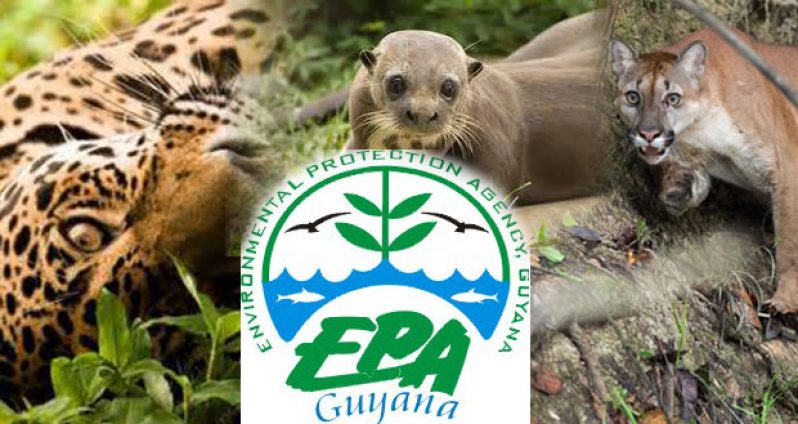Theme: Mainstreaming Biodiversity; Sustaining People and their Livelihoods
Biological diversity or biodiversity refers to all living things that can be found on earth, from the very small, bacteria, viruses, microbes , insects, to the very big; plants, fishes or mammals.  Biodiversity is considered the foundation of life because of the essential ecosystem services it provides. These services provided are irreplaceable and are vital for human well-being, sustainable livelihoods and development. Therefore, by reducing biodiversity loss, we are investing in the country, its people and their well-being.The theme for International Day for Biodiversity (IDB) 2016 is ‘Mainstreaming Biodiversity; Sustaining People and their Livelihoods’. Guyana sees the importance of mainstreaming its biodiversity into the various productive sectors. The Ministry of Natural Resources through the EPA, is currently implementing a UNDP/GEF project entitled “Enhancing Biodiversity Protection through Strengthened Monitoring, Enforcement and Uptake of Environmental Regulations in Guyana’s Gold Mining Sector’ which will see the implementation of biodiversity-friendly practices in Guyana’s gold mining sector. The objective of this project is to strengthen monitoring in Guyana’s gold mining sector to reduce biodiversity loss and maintain ecosystem functionality for the benefit of all Guyanese. This is to be achieved through increased enforcement of existing regulations and Codes of Practice, enhancement of EPA’s oversight role in relation to mining activities, greater institutional collaboration, and building institutional and individual capacity on environmental and specifically biodiversity issues as they relate to mining.
Biodiversity is considered the foundation of life because of the essential ecosystem services it provides. These services provided are irreplaceable and are vital for human well-being, sustainable livelihoods and development. Therefore, by reducing biodiversity loss, we are investing in the country, its people and their well-being.The theme for International Day for Biodiversity (IDB) 2016 is ‘Mainstreaming Biodiversity; Sustaining People and their Livelihoods’. Guyana sees the importance of mainstreaming its biodiversity into the various productive sectors. The Ministry of Natural Resources through the EPA, is currently implementing a UNDP/GEF project entitled “Enhancing Biodiversity Protection through Strengthened Monitoring, Enforcement and Uptake of Environmental Regulations in Guyana’s Gold Mining Sector’ which will see the implementation of biodiversity-friendly practices in Guyana’s gold mining sector. The objective of this project is to strengthen monitoring in Guyana’s gold mining sector to reduce biodiversity loss and maintain ecosystem functionality for the benefit of all Guyanese. This is to be achieved through increased enforcement of existing regulations and Codes of Practice, enhancement of EPA’s oversight role in relation to mining activities, greater institutional collaboration, and building institutional and individual capacity on environmental and specifically biodiversity issues as they relate to mining.
The agriculture sector has also taken steps to promote biodiversity mainstreaming. This is evident with the organic cocoa production project, Region #1 that was initiated in June 2000. The general objective of the project was to increase agricultural income and job opportunities for farmers in hinterland areas of Guyana, as well as develop an export market in cocoa for which Guyana has a comparative advantage. One of the specific objectives of the project was to encourage and assist the Government of Guyana in the formulation and implementation of a public policy, which will encourage the development of organic agriculture, cocoa in particular.
The cocoa plantation has neither been enriched with fertilizer nor have any chemicals used for pest or weed control been applied. An organic cocoa  nursery was established. The first consignment of approximately two (2) tons of organic cocoa was sent to Europe in June 2001.
nursery was established. The first consignment of approximately two (2) tons of organic cocoa was sent to Europe in June 2001.
Overcoming wildlife Nuisance and Cruelty
The conservation of biodiversity have several aspects to it. There is the matter of ensuring that animals, plants and other key organisms, important for human development are sustainably utilized. To a large extent, it involves working with those who depend on biodiversity for their livelihoods to promote best practices, as well as, ensuring that they are incorporated in the extraction of these benefits. On the other hand, conservation approaches taken, need to be regularly evaluated for the best outcomes. This means that institutions and policies remain mutual, in that conservation measures do not override the livelihoods or well-being of persons outside of itself. For example, Jaguars (Panthera onca) and five other wild cats are protected in Guyana. Legally, this translated to no hunting, killing or collecting of these elusive South American giants and their counterparts. With this in mind,  the Environmental Protection Agency (EPA) has been steadily engaging with communities, especially those located within or close to the hinterland areas, where these cats may be posing a nuisance. The Unit receives and responds to complaints regarding the loss of livestock and other perceived or potential threats by wild animals, especially wild cats.
the Environmental Protection Agency (EPA) has been steadily engaging with communities, especially those located within or close to the hinterland areas, where these cats may be posing a nuisance. The Unit receives and responds to complaints regarding the loss of livestock and other perceived or potential threats by wild animals, especially wild cats.
The EPA’s Wildlife Unit from time to time assists community members with appropriate guidance for the cordoning off of access sites and only in instances of dire need, may implement a suitable measure or relocate the animal to a facility of fitting accommodation for subsequent re-entry into the wild.
Another important practice is promoting safe handling and care of animals that are traded or sold. This approach in awareness is also seen as a booster towards generating public empathy for all animals. The EPA through its wildlife Unit has developed guidelines for housing Iguanas (Iguana iguana) while they are on display for sale waiting to be sold. The guidelines outline how the animals should be kept, the significance of reducing stress to the animals and likely legal penalty for engaging in cruel practices.




.png)









